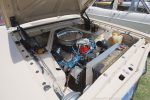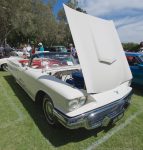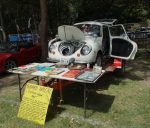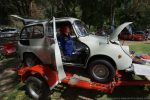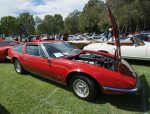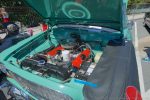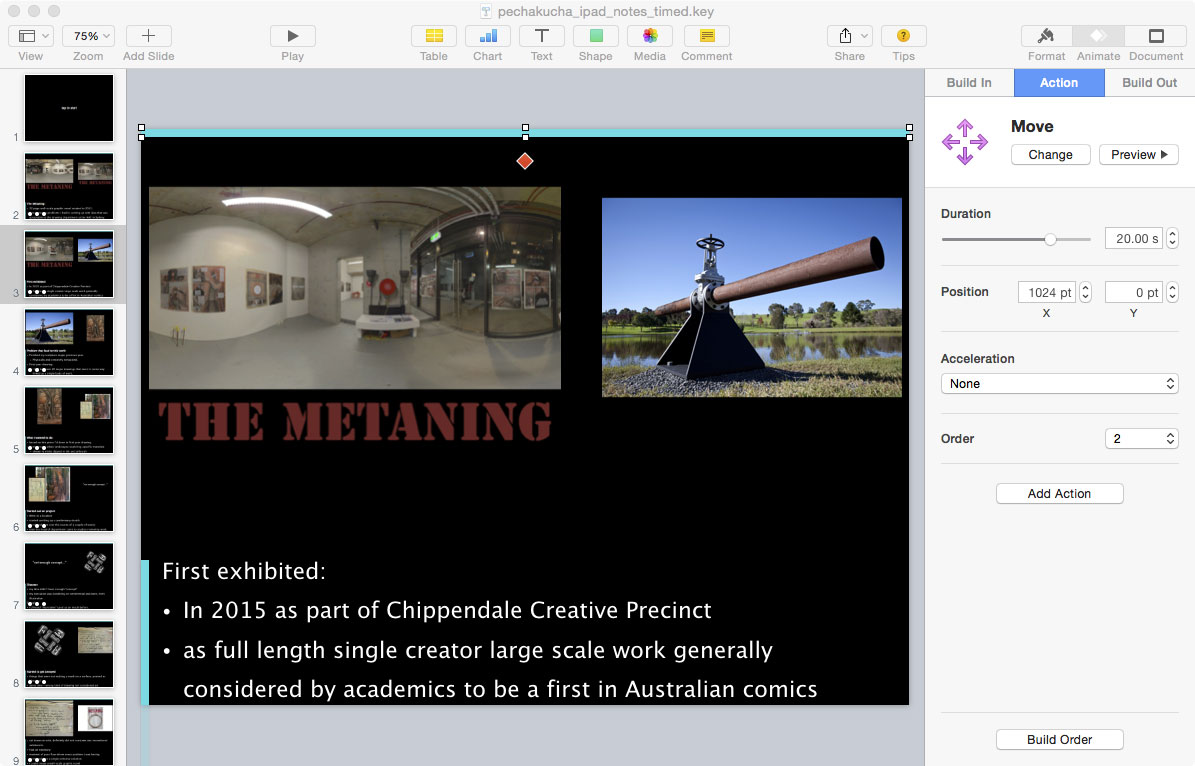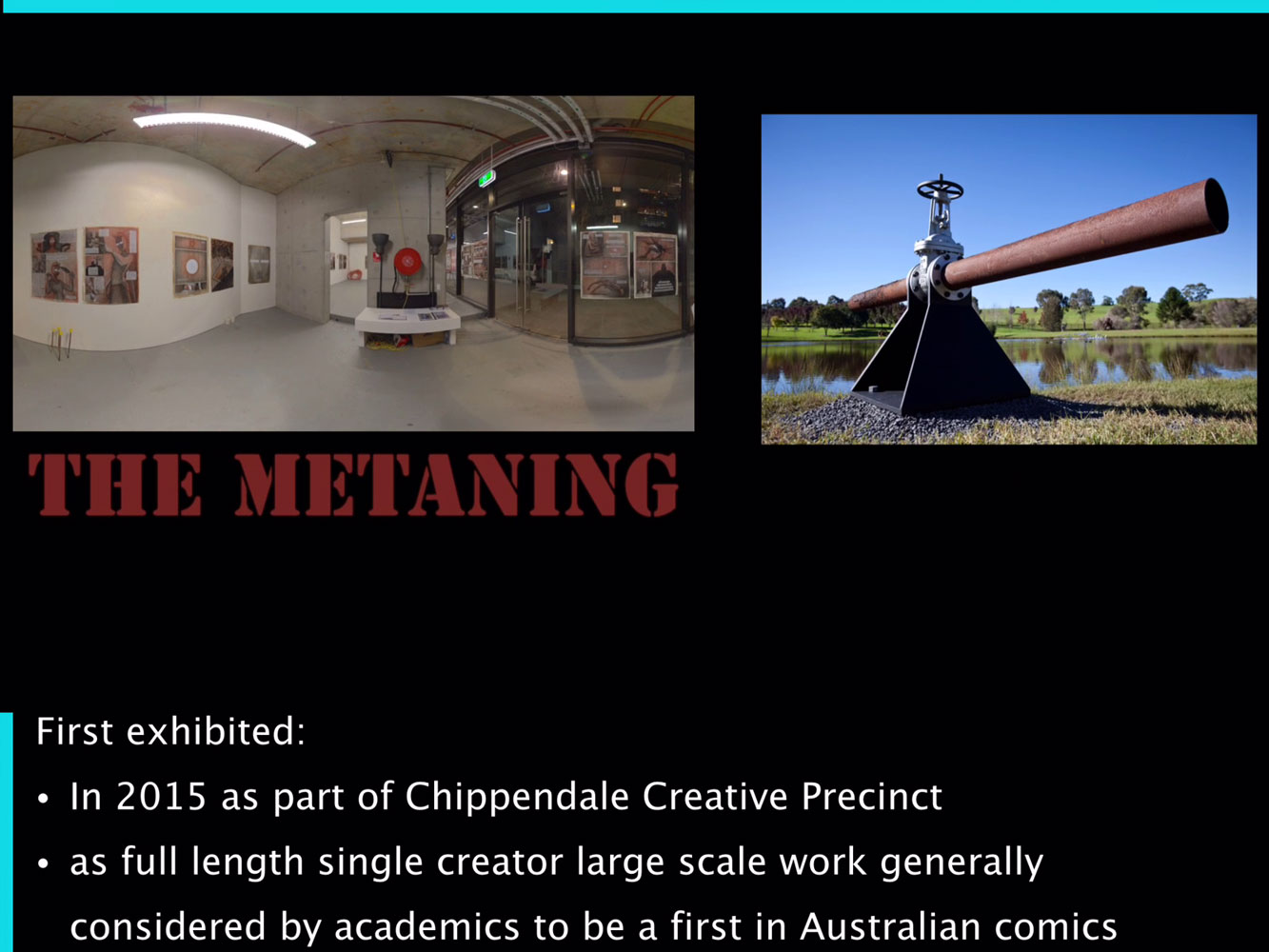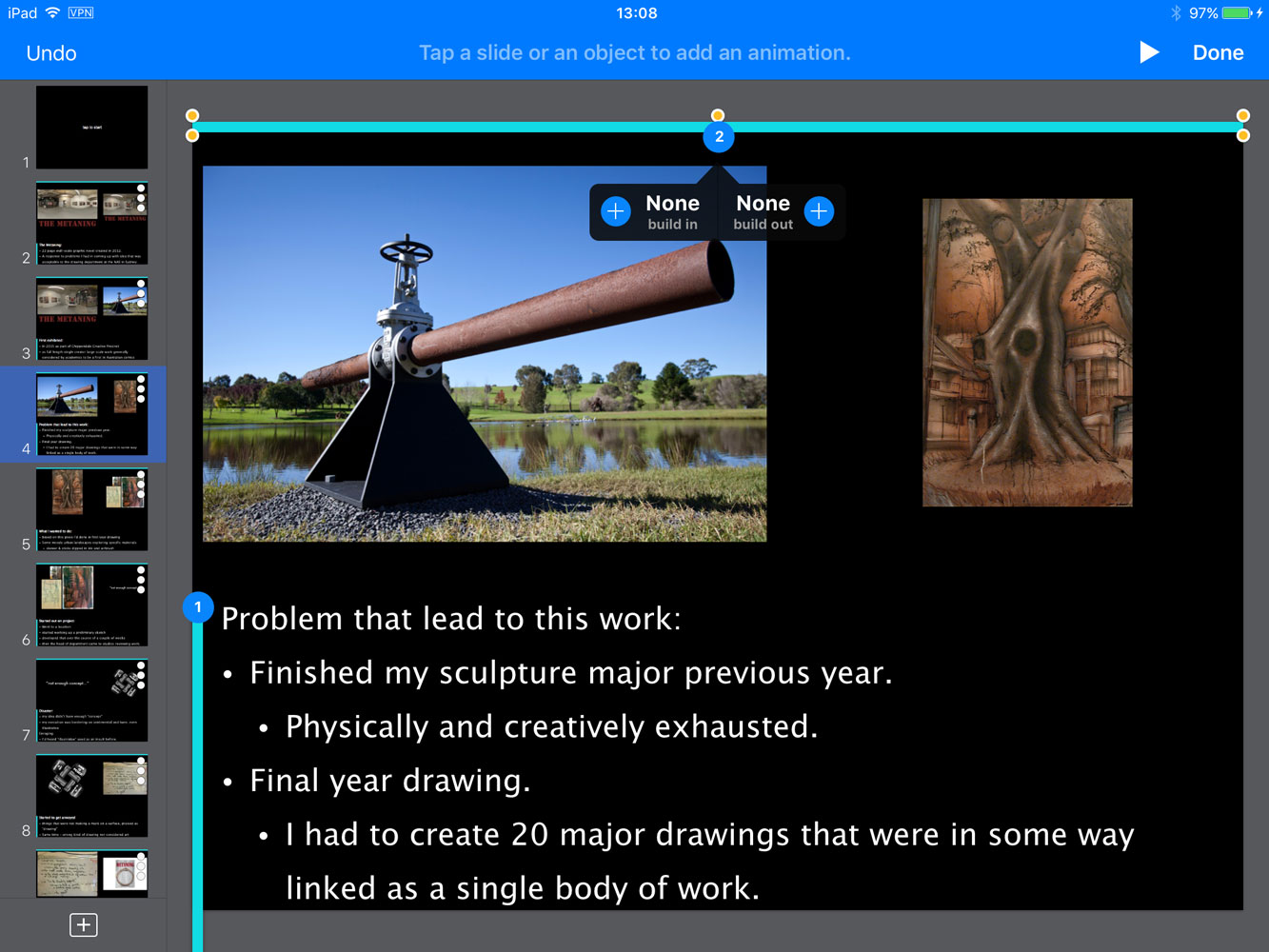Fundamentally Dishonest.
I recently received a communication from a representative if the Australian Copyright lobby, regarding comments I had made on Twitter at the fact that surveys of copyright association members fail to isolate territorial copyright as a question (should it exist?) on its own. This has the effect of preventing members from furnishing their representative organisation with an opinion that could clash with their stated policy, driven as it is, in my opinion, by publishers and middlemen, rather than creators. The response I started writing became so long, that it felt like the sort of thing that makes you look like a crazy person when you email it to someone – “here’s my manifesto”, so to speak.
Therefore, I’m presenting a mildly rewritten version here, where ranty manifestos belong, and sending a short version to the original intended recipient.
As a creator of copyright material, I fundamentally disagree with one of the positions for which Copyright Australia / Viscopy has been an advocate – territorial licensing.
From the outset, lest I appear some sort of Pirate Party sympathiser, I like copyright. I actually think, like shares or land, it should never expire. I think it is a fundamental problem that an artist can’t pass on to their descendants in perpetuity, the sole economic rights to their life’s work, whereas a slumlord with a portfolio of apartments, or a farmer with acres of fields, or a daytrader with a share portfolio, can. All of these require a person to invest their time, and their finances to build up to a point where they’re revenue-positive, but only one gets repossessed by the state 70 years after its creator’s death. Counter-intuitively, it’s the one which doesn’t detract from a finite pool that gets nationalised, whereas land owners can keep benefitting from their exclusive economic rights in perpetuity.
However, I think the protections of copyright carry a social contract that the copyright industry is failing to uphold, and that this failure is at the root of the problem of piracy, and the world-wide movement against copyright.
As members of various copyright organisations, we’re asked for opinions via surveys, which are used by the organisations to lobby government and direct public policy.
The only questions addressing regional licensing in recent surveys, have bundled it with other issues, so that it was impossible for members to express an opinion against regional licensing, without also coming out against something else, which I recall as not being against.
I find this troubling, as it suggests those creating the surveys are either so out of touch / embedded in an echo chamber, that they can’t see the sentiment outside their windows, or that it reflects a, frankly disingenuous, attempt to direct the “results” towards a predetermined outcome.
I suspect that if CA were to survey creators, rather than middlemen or publishers, on this issue in isolation (obviously, with a case that was fairly stated, for both perspectives), it would find most in favour of protecting consumer’s rights to participate in the global economy, and against geographical licensing.
I also suspect it would be hard to find anyone who wasn’t a current, or former, employee of Foxtel, who thinks it’s reasonable for them to have to subscribe to that service, for one tv show which can be bought on its own outside Australia. Or indeed, to watch the full Formula 1 racing season, which anti-siphoning rules have failed to keep on free-to-air TV. Ask Netflix’s Australian customers how they feel about not having access to the same library, at the same price, that American consumers have. Ask yourself why Choice magazine is recommending everyone use VPNs to get around geoblocking.
The Australian people understand, that if their jobs are now subject to global competition, able to be shifted to places where labour is cheaper, then it is only reasonable that they have the same ability to offshore their consumption to markets where products are cheaper.
I would put it to the reader, that the disrespect for this basic right, and the willingness to take advantage of Globalisation (eg to manufacture DVDs cheaply overseas) when it suits, while working to deny those rights to our customers, robs us of the moral high ground to present the case that actually matters – if you access content that its creator put a price on, you must pay that price to access that content.
Arguments about how many jobs are created as a result of regional licensing lose their moral weight when those jobs depend on market manipulation, interfering with free global trade, and rent-seeking behaviour, none of which, consumers should, or indeed do, feel any obligation to protect, especially when it’s not their choice to do so.
By illustration, here’s the archetypical example – I want to buy Dan Koeppel’s book, “Banana” – a geopolitical history of banana cultivation world wide. I want to read it on my iPad, since I don’t have space to keep any more paper books. It’s available for sale on the American iBooks store, It’s available for sale on the American Kindle store, I even follow, and am followed by Dan on Twitter, and have had conversations with him about problems getting Banana.
Penguin (Australia) hold the territorial rights to both print and eBook versions. They have not bothered to make an eBook version available to Australian consumers, and territorial licensing means I can’t buy it from the American stores. They won’t spend the money and time to make it available, but they won’t let us get it anywhere else, either.
Why should the law, copyright advocates, or the Australian people, support this behaviour?
Redcliffe Fair Studebakers Galore
Apple Keynote Frustrations
Apple’s Keynote is an app that I’ve enjoyed using for years. It brings a lot of power and polish for a low effort, and reminds me of the thrill I had when first using Macromedia’s Director 8, upon discovering how much of the app’s abilities were available without using any form of scripting language.
Yesterday, however I discovered a coupe of really serious gotchas that reveal some major limitations with the current software.
Presenter View
Presenter view is an option, which on a multiple display system, allows one screen to show the current slide, and the other screen to show the speaker’s notes, a timer, and the current slide.
A problem surfaces when you want to use your iPad to show your presenter notes, while the presentation itself is being run off a different device. For example, consider a Pecha-Kucha presentation, where you have 20 seconds per slide, 20 slides, auto advancing, and the slides are being run off a central slidedeck on a laptop.
Keynote for iPad won’t show presenter view unless an external display is connected.
Even if you bring along an AppleTV, and set up screen mirroring to it, unless that AppleTV is plugged into a display or projector, you’re out of luck. I’ve heard tell that you can set up Keynote on the iPad to be a remote for keynote on an iPhone, running the presentation on your phone, but that’s still a workaround.
Keynote for iPad needs an update to allow Presenter View to run, without an external display connected – if for no other reason than to allow you to practice your talk.
Mac and iPad
With the launch of iCloud-ified versions of Keynote for Mac and iPad, a lot of features were shed, towards the goal of creating documents that are equally at home in either Mac or iPad. Great, I can get on board with this. The only problem is that it isn’t a complete process, and yesterday, while doing the techtest for a presentation I was going to give, I was bitten HARD by this.
So here is the workspace UI for Keynote for Mac. What’s important to note is that palette on the right, with 3 tabs:
- Build In
- Action
- Build Out
The way it works is that when a slide loads, the Build In settings are run to create the slide, then the Action settings, then Build Out, and finally the Transition effect when leaving the slide itself.
In order to get around the problem above of not having Presenter View available, I created a new slideshow, with a goal of it running in time to the Pecha-Kucha slidedeck, that was essentially what you see in Presenter View.
Since you only have 20 seconds per slide, I wanted a countdown timer for each slide, but rather than using numbers, which are visually distracting, I decided a simple graphical solution would be better. Thus, a blue bar across the top of the slide, and next to the bullet points, which disappears off screen to the right in the former, and downwards past the various bullet points in the latter. This was done with an Action, known as Move, which allows you to set the endpoint and duration of the movement.
Then, with the slide set to auto transition after zero delay, you have a 20 second presenter slide, with time remaining indicator, that then goes immediately to the next slide. Fantastic! Or, so I thought.
When I arrived at the event and did the tech rehearsal, what I discovered is that Powerpoint running on a Mac has a different idea about what 20 seconds is, to Keynote on an iPad, and I had tested my stack against my iPhone’s stopwatch. With Powerpoint set to 20 seconds and no transition time, the iPad about 5 seconds behind by the end of my last slide.
So, no problems, I’ll just edit each of my slides to remove 0.25 seconds from the Move action, that’ll compensate and I’ll be up to speed.
Nope!
While Keynote for iPad knows that the Action stage of the build process exists, and will play the Action stage, it offers no way to create or edit an Action.
As you can see from the video linked on the left here, when you go to add a Build In or Out, you can see that there are actions on the object when you go to look at the Build Order, but there’s no option to adjust it.
A final gripe about the Mac version of Keynote, selecting an image, right clicking and choosing “Replace Image” brings up an iOS style image picker that only shows you the contents of your system’s photo library – in my case, Aperture. It locks you out of accessing your actual filesystem, where for example, you might have kept all the images you’re planning to use within a main project folder in ~/Documents.
This is a symptom of the overall problem I’ve found trying to use the iPad to get actual work done. If everything you do is in a single app, like say, drawing in Procreate, it’s fantastic. But, if your task is assembly, bringing together media from multiple sources, tweaking and adjusting etc, the fundamental nature of iOS – its inability to be file-centric, the way Finder makes a Mac, causes tasks that are mundane and easy, to be like trying to run, while up to your waist in water.
iCould Drive is not a solution – anyone who thinks that the way to move files between devices, is to send them through a server on the other side of the world needs to be sentenced to a year on dialup. iOS needs full peer networking with Macs. It needs the ability to access, and be accessed by filesharing with the same capabilities as the Mac. Finally, it needs to ditch this ridiculous notion that data and documents are contained within apps themselves. I should be able to delete an app, without losing anything I’ve done using that app.
When your Mac Refuses to Sleep.
The Symptoms:
You put your mac to seep, the screen(s) go black, but the machine doesn’t power down its drive(s) and sleep. Pressing a mouse button or keyboard key brings the screen(s) straight back up.
The problem persists through reboots, logouts, changing user accounts, deleting com.apple.PowerManagement.plist, and even doing a full SMC reset.
The Solution:
Go to the Printers & Scanners preference pane, and make sure you haven’t got a printer with a paused print queue, or a printer which isn’t actually connected any more, which you may have accidentally sent a job to, which the system is trying to find.
If this article was of use, a donation would help support my projects.
Another Thing Done.
So, Surfing The Deathline part 4 is now live and on sale, which ticks off one of the things I was going to do once I had relocated.
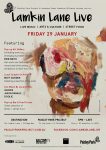 Other exciting things happening at the moment – this Friday I’m exhibiting a few small sculptures in an event happening down the coast a bit “Lamkin Lane Live”. So, there’s been a bit of work digging out a few old works, and getting them back into fresh and new condition.
Other exciting things happening at the moment – this Friday I’m exhibiting a few small sculptures in an event happening down the coast a bit “Lamkin Lane Live”. So, there’s been a bit of work digging out a few old works, and getting them back into fresh and new condition.
After that’s done, I’m taking part in a talk on the theme of “animate”, talking about re-animating my artistic practice to lead to The Metaning.
It’s a really interesting dynamic about being out of the city – the people who are in arts-supporting positions really want to make things grow.
2015 Wrapup
The end of another year, and I’m looking back at the past 16 months, since they mark a two major shifts in life. The first was mentioned here. The move to a warehouse turned out to be one of the biggest mistakes of my adult life. Once we’d moved in, it became apparent that the landlord’s version of what we were promised, was very different to what we believed it had been when we moved in. We spent months freezing through the tail end of winter, chasing leaks in the roof when it rained, then roasting through a brutal summer – desperately trying to block the sun from the windows and keep the heat out. Our neighbours, as far as we could tell, were putting human excrement on their garden, so every week or so there’d be a reek so pungent you couldn’t step outside. The suburb itself, may as well be a demilitarised zone. All night you’d hear the sounds of idiots in hotted up cars.
It’s a low socio-economic area, and frankly when you see the way people drive, you can see why. I watched someone overtake a car which was stopped at a red light with a pedestrian crossing, on the crest of a road bridge over a rail line. To do this, they crossed an unbroken centre line onto the wrong side of the road & ignored the red light. I saw someone else driving down the main road overtaking cars that were waiting to parallel park, by driving on the other side of planter boxes and pedestrian islands that separated the two lanes of traffic. My car insurance went from $800 for a $17k vehicle, to $1100 for a $14k vehicle, per year.
Two months after we moved in, we were flooded. Several inches of water throughout the building, sewer breathers underwater, so bathroom drains backing up, and that neighbour’s garden, which was uphill of us, flooded all of its contents in as well. I lost a about a third of my college drawing work to the water. We were flooded again, to a much smaller extent, almost a year later. This time the water simply came in through the base of the walls, because the building’s dampcourse was too close to the ground.
The extra distance from the city did a large amount to kill off the social life I’d enjoyed previously. Night buses became enough of a pain point, that the non-taxi distance we were just made going out more effort than it was worth.
By early 2015, It was apparent that this wasn’t going to work, so I started working on an escape plan.
Artistically, the year saw a number of major things happen. My sculpture out at UWS was destroyed in a wind gust (at least that what they said happened), or rather, it was destroyed as a result of being left in a damaged state for 2 days before I was contacted. So I brought it back home in pieces, and then scrapped it – something I’d never done for a large work. I managed to finish off all the drawing for Surfing The Deathline, and I finally got to the top of the panoramic photography mountain I’ve been climbing for 15 or so years, by getting a hardware and software workflow that produces super-accurate and predictable results.
My biggest artistic achievement of the year was the exhibition of The Metaning – as far as I know, a first within Australian comics. The exhibition had some hiccups – most regrettably, there was no video recording of the opening speeches, but overall was a success.
With the exhibition out of the way, I was able to prepare for the most significant event of the last year – leaving Sydney.
For 40 years I’ve lived in the one city, half of that in the same small enclave of the inner-west. However, Sydney has become an insane city, ruled over by the avarice of property developers, and a police force drunk with power. Every bit of life is being squeezed from the town. My year away from the inner west saw many of the things I loved about it disappear, and as rents inexorably climb, I came to the conclusion that I couldn’t afford to live anywhere in which I’d actually want to live.
So, I left. I moved 700 miles north, into the sub-tropics of the Sunshine Coast, in Queensland. It’s a very different life up here. For the first time, I don’t feel a constant pressure, a constant stress of anxiety and fear. Granted, part of this is because I’m staying with family (but still paying market rents). Most of it, however, is an absence of a part of the experience of Sydney if you’re renting – constant fear of the whims of landlords. Will they raise rents in retaliation for asking for necessary repairs? Will they be so heavily geared, they’ll go bust and the bank will sell out from under you, will they put the place back on the rental market, because they know they can get a higher rent, just by getting a new tenant in?
Here, things are different (for now). It’s a short walk to some nice bars, with a view over the river, everywhere has separated bicycle paths, so I bought a bike, my car insurance is down to ~$600 / year, and I’m getting significant work completed on Surfing The Deathline – the end is in sight for a project that has been a constant in my life for the past 12 years.
One that’s done, I need to look at the next stage artistically. I’ll try to look for what the options will be in terms of new things. I’ve already attended my first local comics convention as an exhibitor, and the first week of the year is scheduled to be concluded delivering a workshop to children on Manga and comics design. Getting my sculpture practice back up & running is going to be a bit of a challenge, but I’m going to get much more heavily into photography, until then. The other change I decided to make, is to get a Lynda subscription, and teach myself to program software. With Apple launching a new language that looks like it’s going to be a pretty big deal, and the little bits I taught myself to do for the EPUB comics I released, I think this’ll be a good use of my time between finishing Surfing The Deathline, and having a workshop again.
Surfing The Deathline progress.
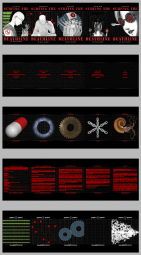 Longrunning doesn’t really seem to do justice to how long, how painfully long, the development of Surfing The Deathline has been. However, there is light at the end of the tunnel, and all going well, it’s not an oncoming train.
Longrunning doesn’t really seem to do justice to how long, how painfully long, the development of Surfing The Deathline has been. However, there is light at the end of the tunnel, and all going well, it’s not an oncoming train.
As we draw to the end of 2015, the main environmental lighting and toning is complete for part 4, and I’m getting back into something I haven’t really touched in a couple of years – the covers for 4, and now 5.
All this time, I had a holding image in place – a rough that was to form the basis of the final art, and a very specific idea of how the cover would look colour-wise. Once I got down to it, however, I just wasn’t happy with the direction it was headed – plus, I had a second book to contend with. Trying to keep all the different images in my head, so I could work out the flow of the whole series, was proving unwieldy, until I discovered something I hadn’t realised I could do previously – embed one InDesign document inside another.
Now, the process works quite smoothly – page art is in Photoshop, and any updates made flow through to the master InDesign document where the whole book is assembled. That document is then embedded in a large composite document, pictured here, which racks up the front and inside front covers, frontispiece art, inside back, and back covers.
Getting that big picture made it far easier to do a number of things related to which book would get which cover image, and which set of intro words. The last two books flow like a single long book in many ways – much like 1 & 2, it was originally written as a single book, before being split and extended in the middle.
The upshot is that all the questions I had about this are settled. The final theme colours for the issues are green, red, blue, black, and white, respectively. It was a moment of grooving out to Nick Cave that cracked the problem of part 4’s cover art, furnishing me with an image that both matches the events of the book, and the red spot colour theme that carries through the series. Having a black theme colour against a black background is difficult, but workable and appropriate given what happens in that part.
When iTunes Wi-Fi Sync Stops working.
Sometimes, the ability for iTunes to sync with your iPad, iPhone, or other iOS devices, will simply vanish, and nothing you do seems to solve the problem. The solution may be counter-intuitive, but comes back to the first rule of tech support:
“Did you try turning it off and on?”
There I was, working away, when I noticed the Wi-Fi indicator on my Mac’s menubar suddenly doing the searching for a signal animation. It found the basestation again, and all seemed fine – but then I noticed both my iOS devices had disappeared from iTunes. Odd, I thought, but not without precedent. Sometimes this happens, and switching the Mac’s Wi-Fi on and off will fix the problem.
Alas, this time it didn’t.
Plugging them in via USB and everything worked fine – both devices had the necessary check mark for Sync via Wi-Fi, but as soon as they were unplugged, nothing.
Going through the process of elimination of what worked:
- The Mac still had network access to the internet via Wi-Fi.
- The iOS devices still had access to the internet via Wi-Fi.
- My fileserver / storage app on iOS could still be reached by the Mac.
- Airdrop still worked between my Mac and iPad.
Most perplexing – in all respects, all the devices seemed to be able to do everything over Wi-Fi except see each other for iTunes Wi-Fi sync.
Here’s the list of the things I tried:
- Complete shutdown / restart of Mac and all iOS devices.
- Switching all devices from DHCP to fixed IP addresses.
- Running the latest Yosemite security patch, and updating iTunes to the latest version (total shot in the dark).
- Sacrificing a goat.
- Restoring iTunes .itl files to versions prior to the problem manifesting.
After wasting about 3 hours on trying to solve this, eventually, in desperation, I rebooted the modem, which is also the Wi-Fi basestation.
Bingo! Problem solved.
So, it seems that somehow, part of the modem’s software which allows for service discovery specific to iTunes Wi-Fi sync had failed. This failure only effected those specific functions, allowing everything else on Wi-Fi to continue working, which threw suspicion over on to the Mac where iTunes was running.
If this article was of use, a donation would help support my projects.




